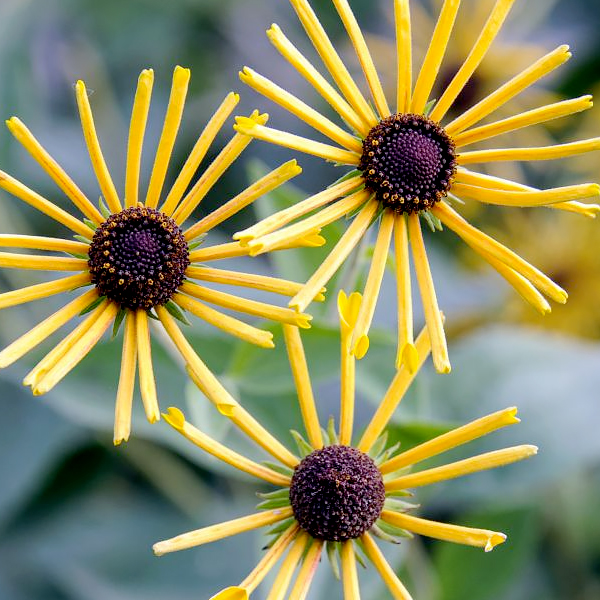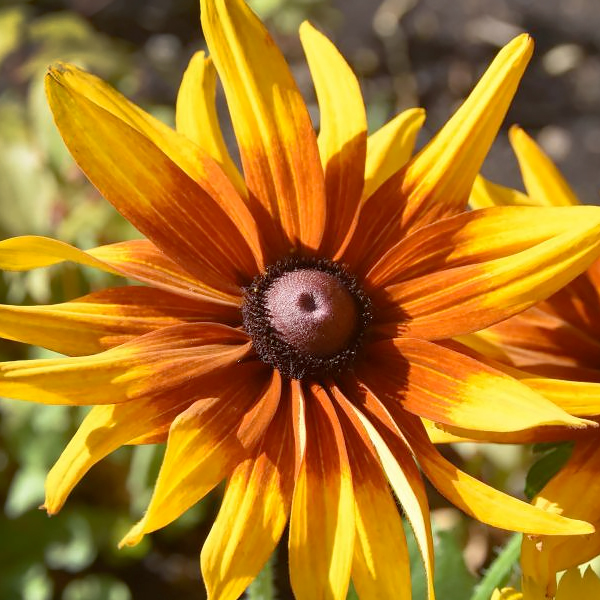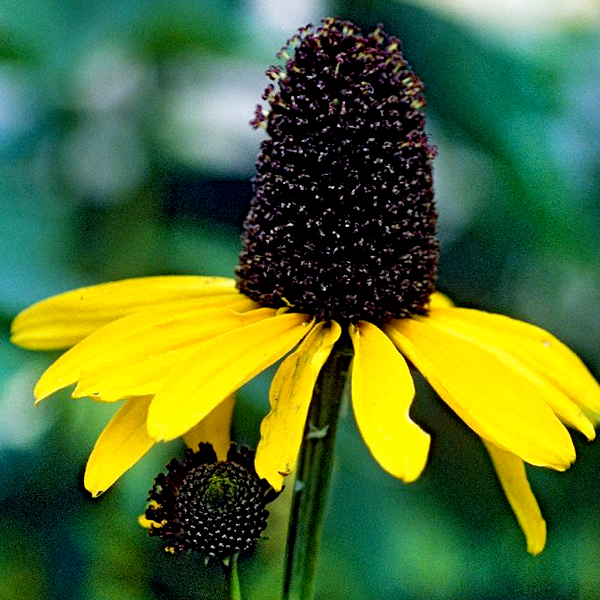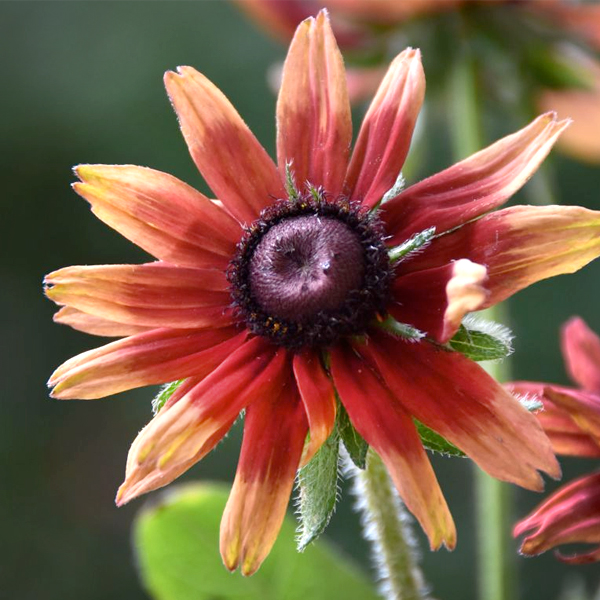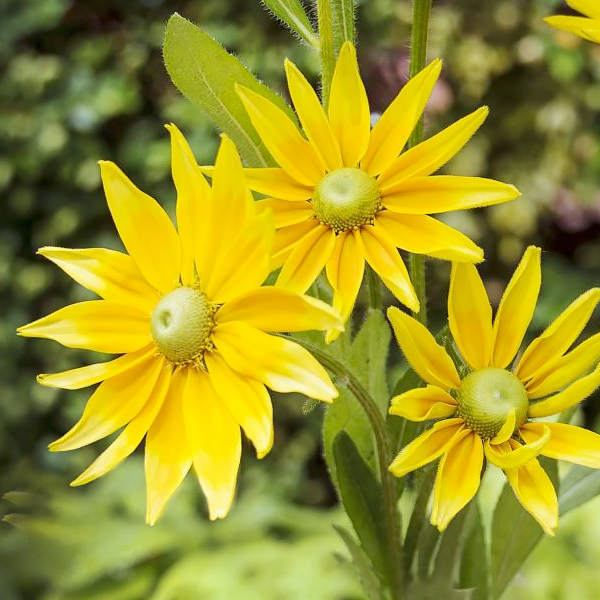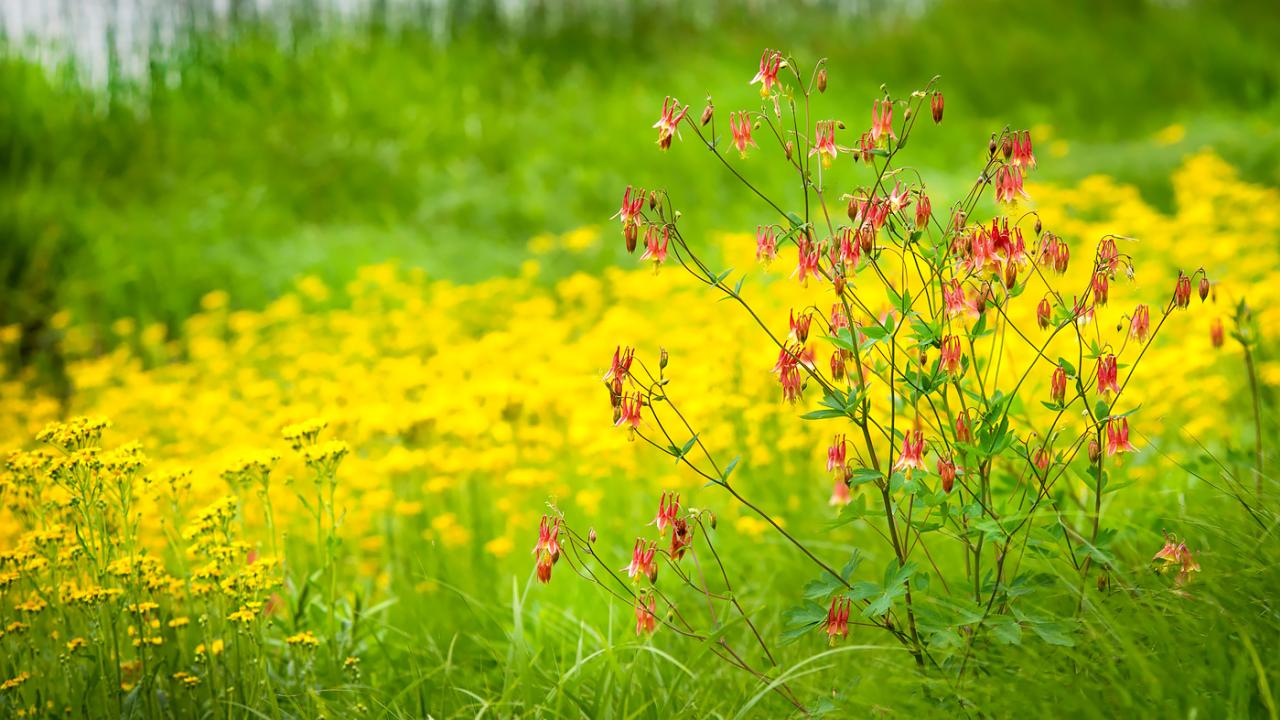

Plant Science & Conservation
Garden Stories
Rudbeckia—How Sweet It Is!
Pondering the Prairie Series
Black-eyed Susans are among the most recognizable and beloved wildflowers, but there are a few things you may not know about them. For one thing, there are several wild species of Rudbeckia growing in the region and several cultivars with bigger and/or fancier flowers that have been developed for people’s gardens.
My favorite, sweet black-eyed Susan (Rudbeckia subtomentosa), is a native species of moist to wet prairies and woodland edges. Although the flowers are very similar, the familiar common black-eyed Susan is a short (about 1 – 2 feet), often annual or biennial with simple leaves, whereas sweet black-eyed Susan is a much taller (3 – 5 feet) perennial with three-lobed leaves. Also, sweet black-eyed Susan begins blooming when common black-eyed Susan is finishing.
By the way, the typical description of a black-eyed Susan’s flower as having yellow petals with a dark center is technically not correct. This description would be more accurate if one were describing the inflorescence of the plant. The inflorescence of black-eyed Susans is a group of flowers held closely packed together in a head. The dark center of the head, when dissected, is composed of hundreds of tiny individual flowers called disc flowers. Each of the yellow “petals” surrounding the central disc flowers are not the petals of a single flower but are the single modified petal (ligule or ray) of an individual flower called a ray or ligulate flower. I know this is hard to get your head around, since the entire heads of many tiny flowers are arranged in a way that looks like a single flower, but if you break a head apart and look closely with a hand lens, you will see that it is actually composed of many flowers.
Although this is all very interesting, the special arrangement of tiny flowers in heads is not unique to sweet black-eyed Susan. All of the Rudbeckia heads are similar. What makes this species so special is that it is sweet. The heads of flowers are not particularly sweet smelling and the plant is not sweet to the taste. However, if you have clump of sweet black-eyed Susan growing in your garden or prairie at home, you may notice a sweet, spicy fragrance emanating from it; especially on a dewy, humid morning in the fall. This wonderful aroma comes from the fruits.
In the Chicago Botanic Garden’s Dixon National Tallgrass Prairie Seed Bank where I work, we have received several collections of sweet black-eyed Susans. The process of preparing these seeds to enter the Seed Bank involves rubbing the heads on a screen to release the seeds within (remember, all of those tiny disc flowers produce a single seed). The fragrance in the seed lab when cleaning this species is wonderful!
Sweet black-eyed Susan is a sweet addition to any garden for several reasons: it is a native species, a long-lived perennial, adaptable to several habitats, has beautiful flower heads, and adds a wonderful, spicy fragrance from the fruits.


